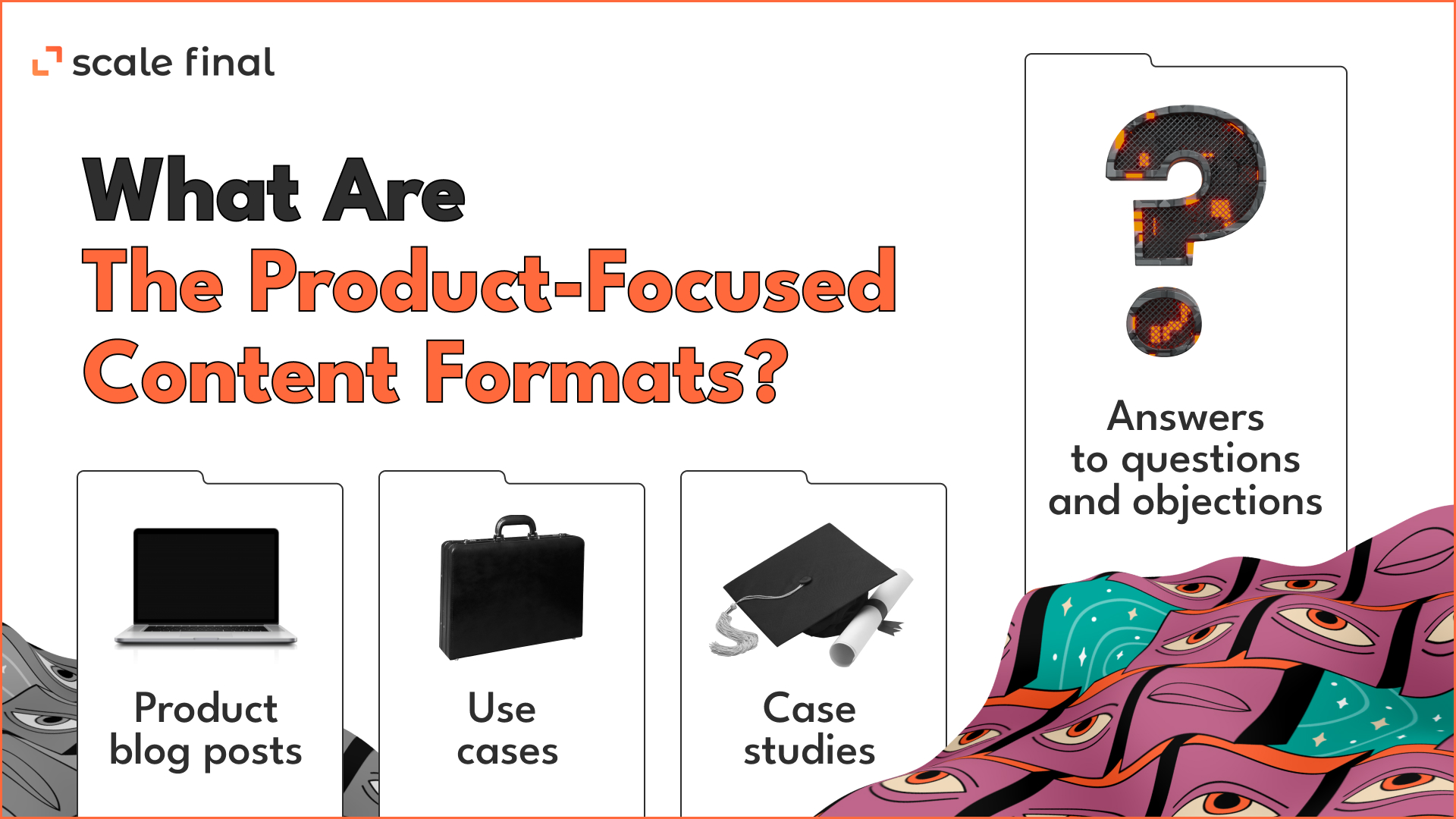Home • Blog • How to write content that sells. Part 1
How to write content that sells. Part 1
Does content marketing strictly consist of useful content? Planned articles that teach readers something and make their lives better? So that they start to like you for the usefulness and buy the product with shining eyes. Happy Ending.
What is somehow forgotten is that such useful content isn’t the only way to do content marketing. It’s the most complicated, expensive and time-consuming way. And actually, not everyone needs it either.
In this series of articles, we present four alternative content marketing strategies: what they are, how they persuade readers to buy, and for whom they’re suitable. We also give some examples of successful implementations of these strategies.
This part is about Product-focused content strategy.
What are the problems with the “useful” approach to content marketing?

1. Very broad topic. You work in B2B, which means you need to create content about the business: hiring people, optimizing processes, taxes and accounting, marketing and sales. Usually you start with this logic: “Our customer is an entrepreneur, they’re interested in all this, we have to give them this.”
2. Lots of teaching. Useful content should change the reader’s life for the better. They have a poorly performing sales department? You’re about to show one such article that your reader will use to boost the performance of their salespeople!
The money will flow like a river, you promise. You’ll either not talk about the product and share case studies at all, or you’ll do it very rarely and carefully. It’s about selling; it’s not useful, it doesn’t fit your big altruistic goal.
3. Long warm-up. Useful content needs to retain readers, and that takes time. That’s why part of a “useful” strategy is that readers have to subscribe to you so they keep getting your content. They’ll warm up, and buy something after all.
The result is usually sad: even if you manage to produce quality content on a regular basis, all that work doesn’t turn into leads and sales.
The enthusiasm fades, the blog is abandoned.
And it’s all because there’s no content-to-product connection. Articles show how to solve a problem, but they don’t show how the product helps solve that problem.
It turns out to be charity, not marketing: you give a benefit, but you don’t get it in return.
There is a solution. And by the way, it saves you money because you don’t have to create big brand media.
Strategy 1: Product-focused
This is a common content marketing strategy that simply highlights the product. Potential customers somehow found you. With the help of the content, they can study the product in detail and make a decision to buy.
The main task of the product-focused content strategy is to make the product as clear as possible to the customer. Therefore, the cycle of working with the customer is short: you shouldn’t sign them up on social networks and warm them up for a long time, but instead give them all the necessary information to make a decision.
This strategy is suitable for products whose benefits are clear to the customer. That is, they know what they want and that this particular product will help them solve problems.
An example of such a product is technician repair services. Is it necessary to warm up to the average device owner? To sign them up for your social networks? Or to have a newsletter containing useful articles about repairs?
No, you don’t need to. Most of the time, the owner doesn’t care about breakdowns and replacement parts. But when something happens to their device, they’ll be looking for service – and that’s where we need to pick them up with content marketing.
Your goal is achieved through content about the product: what it’s made of, how it’s provided, what the limitations are, and whether it accurately solves the customer’s problem. You need to create a feeling in the potential customer: “Yes, this is exactly what I was looking for.”
What are the product-focused content strategy formats?

1. Product blog posts
These articles delve into the main branding. It’s impossible to answer all the questions and explain all the nuances on the site, so you move some of this information to articles.
This is exactly what Dustless Blasting does. Their main focus is on the product, and all articles in the blog are about its features and how exactly it helps solve their customers’ problems.

2. Use cases
These are articles about some scenarios of product use: you take a situation that potential customers encounter and show how it’s considered in your product.
Miro publishes many use cases of its product via its blog. The reader thinks, “Yes, I do that too (or would like to do it) – and that’s how it’s implemented in this product. It works for me.”

3. Case studies
This is a classic of content marketing, cases must be published with every content strategy. Yes, even without a content strategy they should be published. Because case studies are the proof that the product is good on paper, but also in practice.
We at Scale Final post on a regular basis, too. Check out our case studies.

4. Answers to questions and objections
It’s good if the content department works in connection with the sales department and technical support – then the content can answer the questions and objections that come most often from customers. After all, some customers ask these questions, and some just leave – content can help you keep them.
Coinrule crypto trading bot has a special Knowledbase blog on the platform. This blog answers all their customers’ answers.

In the next series we will talk about 3 other content strategies: Expert, Demand generation, and Community.
Author
-
 ScaleFinal Content Writer
ScaleFinal Content WriterExperienced writer in different domains. I package meaning into words and bring people together. Know how to convey the vision and values of a product in writing. I like reading, movies, sports and blockchain.
View all posts






